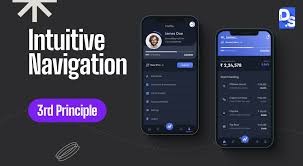Designing intuitive mobile experiences is both an art and a science, requiring a deep understanding of user behavior, technical constraints, and the subtle nuances of interaction design. In a world where mobile devices have become the primary gateway to digital content, users expect applications to be fast, responsive, and easy to navigate. The challenge for designers is to create interfaces that feel natural and effortless, while still delivering powerful functionality. Achieving this balance demands empathy, clarity, and a relentless focus on the user’s journey.
At the heart of intuitive design is the principle of simplicity. Mobile screens are small, and users are often multitasking or on the move. This means that every element on the screen must serve a clear purpose. Cluttered layouts, ambiguous icons, or hidden features can quickly frustrate users and lead to abandonment. Instead, designers must prioritize clarity, using familiar patterns and visual cues to guide users through tasks. For example, placing a prominent call-to-action button at the bottom of the screen aligns with natural thumb movement and encourages engagement. These small decisions, when made thoughtfully, contribute to a seamless experience that feels instinctive.
Navigation is another critical component of intuitive mobile design. Users should be able to move through an app without having to think too hard about where to go next. This requires a logical structure, consistent labeling, and predictable behavior. A well-designed navigation system anticipates user needs and minimizes friction. For instance, a shopping app might use a bottom tab bar to separate categories like home, search, cart, and profile, allowing users to switch contexts with ease. When navigation is intuitive, users can focus on their goals rather than figuring out how to use the app.
Feedback and responsiveness also play a vital role in shaping user perception. When users tap a button, scroll a list, or submit a form, they expect immediate acknowledgment. This feedback reassures them that the app is working and that their actions have been registered. Visual cues like loading indicators, animations, or subtle haptic responses can enhance this sense of responsiveness. Consider a messaging app that shows a typing indicator when the other person is composing a reply. This small detail adds a layer of interactivity and keeps users engaged. Without feedback, users may feel disconnected or uncertain, undermining the overall experience.
Personalization can further enhance intuitiveness by tailoring the experience to individual preferences and behaviors. Mobile apps that adapt to user context—such as location, usage history, or time of day—can deliver more relevant content and streamline interactions. A fitness app, for example, might suggest workouts based on past activity or remind users to hydrate during hot weather. These personalized touches make the app feel more intelligent and user-centric, reducing the cognitive load and increasing satisfaction. However, personalization must be handled with care, respecting privacy and offering clear controls over data usage.
Accessibility is another essential consideration in intuitive mobile design. An app that is easy to use for one person may be challenging for another, depending on factors like vision, motor skills, or cognitive load. Designing with accessibility in mind means ensuring that text is readable, controls are reachable, and interactions are inclusive. Features like voice commands, screen reader compatibility, and adjustable font sizes can make a significant difference. When accessibility is baked into the design process, it not only broadens the app’s reach but also reinforces a commitment to user empathy and inclusivity.
Testing and iteration are key to refining intuitive experiences. Even the most well-conceived designs can benefit from real-world feedback. Usability testing, analytics, and user interviews provide valuable insights into how people interact with an app and where they encounter friction. These findings can inform adjustments to layout, flow, or functionality. For example, if users consistently struggle to find a feature, it may need to be repositioned or renamed. Iteration ensures that the design evolves in response to user needs, rather than remaining static or based solely on assumptions.
Cross-platform consistency is also important, especially for users who switch between devices. An app should feel familiar whether it’s accessed on a phone, tablet, or wearable. This means maintaining consistent branding, interaction patterns, and data synchronization. A note-taking app, for instance, should allow users to start a note on their phone and finish it on their tablet without any disruption. Consistency builds trust and reduces the learning curve, making the experience more intuitive across contexts.
Ultimately, designing intuitive mobile experiences is about understanding the user’s mindset and crafting interactions that align with their expectations. It’s about removing barriers, simplifying choices, and creating a sense of flow. When users can accomplish their goals without confusion or hesitation, they are more likely to return, recommend, and engage deeply. In a competitive digital landscape, intuitiveness is not just a design preference—it’s a strategic advantage. By focusing on clarity, responsiveness, personalization, and accessibility, designers can create mobile experiences that feel not only functional but delightful. And in doing so, they help bridge the gap between technology and human connection.





